P. Karst. 1881
What is Ganoderma?
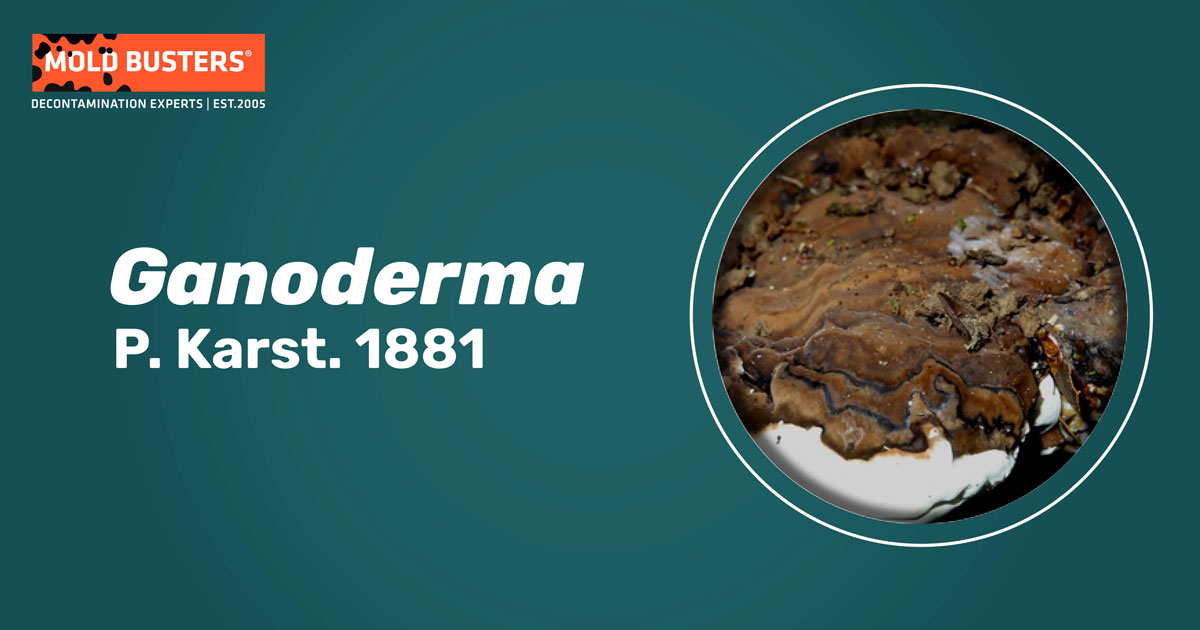
Ganoderma is a genus of fungi renowned for its medicinal properties. In China, Japan, and other Asian countries, Ganoderma spp. mushrooms have been medically and culturally relevant for over 2000 years [1]. Often referred to as Lingzhi, Reishi, or Mannentake, the medicinal benefits of Ganoderma were first exploited in Asian countries.
In ancient China, Ganoderma was so valuable, due to its medicinal properties, that all common people were forced by law to give any mushrooms they find to the nobility. The fruiting bodies of Ganoderma have a fan-like appearance and grow on the trunks of dead or living trees (Fig. 1).
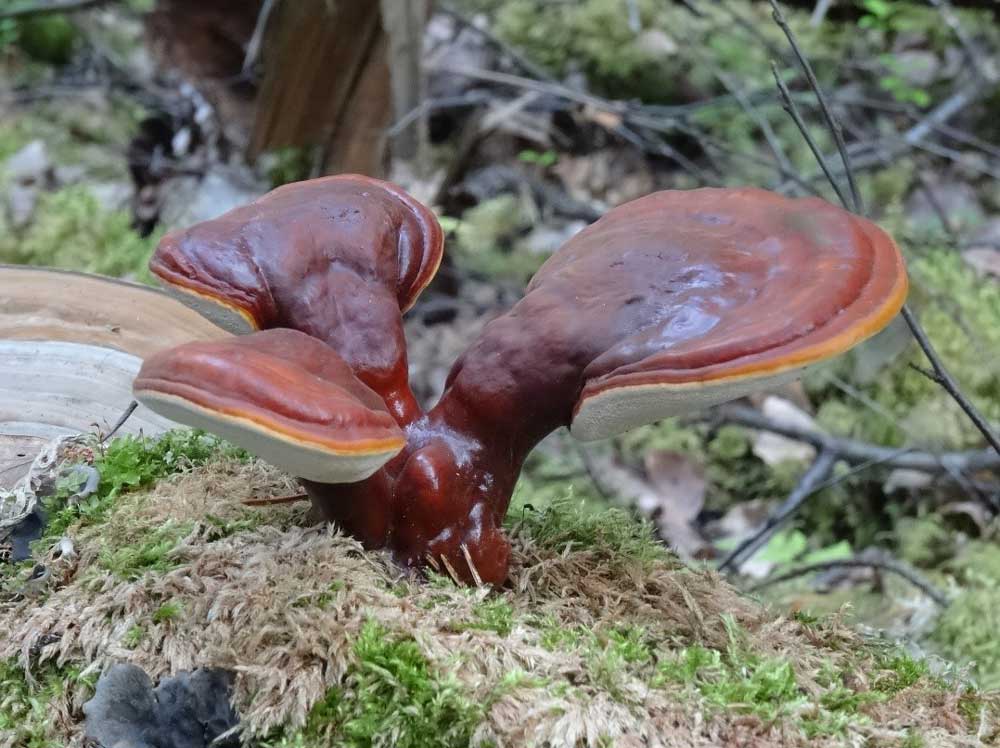
Ganoderma fungi produce enzymes that allow effective colonization and breaking down of wood. Certain species are known to devastate plantations of several economically important tree species. G. zonatum is well known for its deadly effect on palm trees and G. applanatum is a common cause of decay and death of trees, such as beech, poplar, apple, elm, chestnut, maple, oak, walnut, willow, fir, spruce, and several others (Fig. 2). Interestingly, this species was responsible for the loss of the Anne Frank Tree in Amsterdam [8].
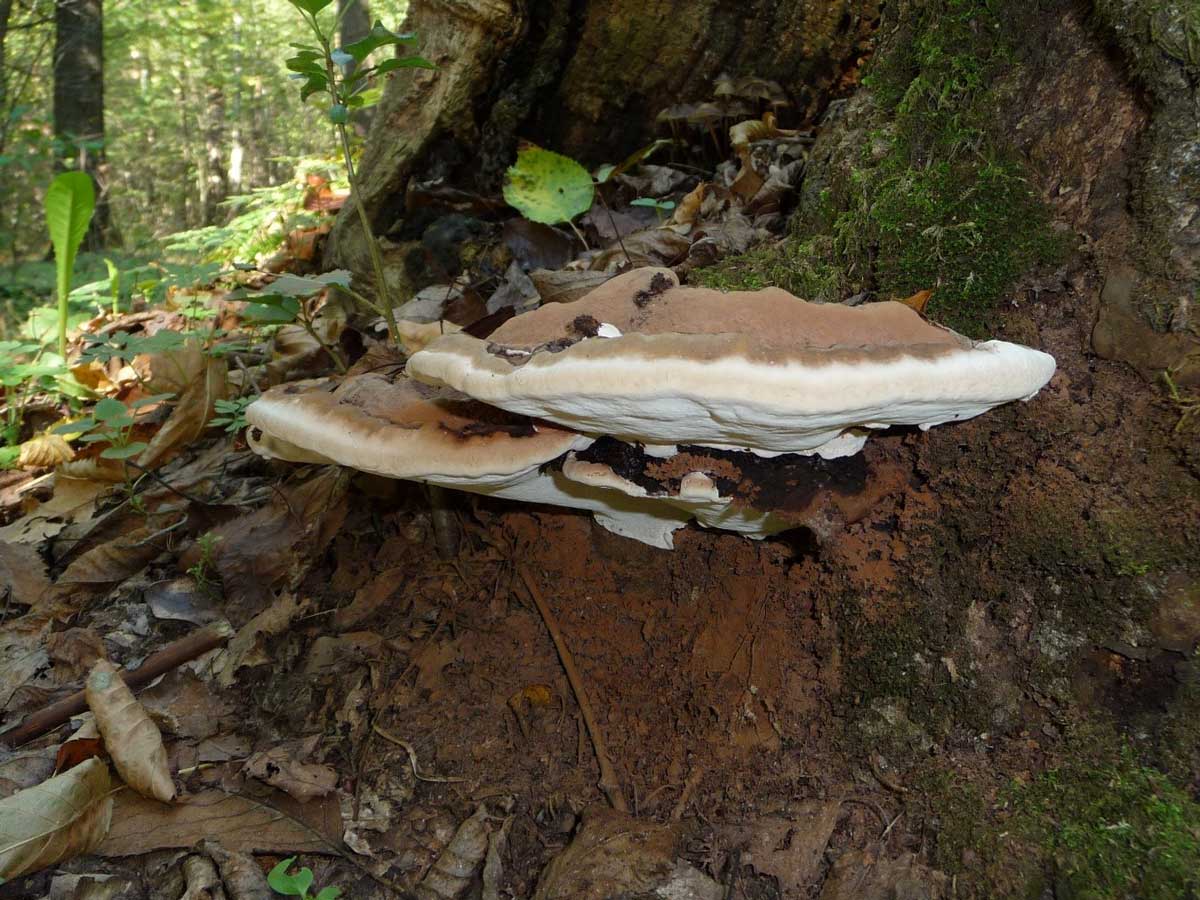
Common Ganoderma species
According to the current taxonomy, there are around 200 species in the Ganoderma genus. They have worldwide distributed polypores with considerable morphological variations. Ganoderma species may also differ by their host specificity and geographic distribution. Some common species of Ganoderma include G. lucidum, G. tsugae, G. applanatum, G. curtisii, G. colossus, G. meredithae, G. resinaceum, G. sessile and G. oregonense.
G. lucidum is the type species of the Ganoderma genus and is very common in tropical areas. It has a white surface that turns its color to near-brown when touched. As they grow, the delicate white appearance changes to a shiny woody one.
Where can Ganoderma be found at home?
Ganoderma is unlikely to grow on young and actively growing trees – it is commonly found on older and senescing trees [3].
Ganoderma grows on tree stumps of hardwoods, on logs, and sometimes at the base of a tree. To find them in your yard, you can check the stumps of conifers; hemlocks in particular, which they prefer. You should also check around maples, oaks, and elms, and if you live in the tropics, check your palm trees for Ganoderma.
Are you wondering how to identify Ganoderma at home? Luckily, as polypore fungi, they are easy to spot. They are often called bracket or shelf fungi and form large fan-shaped fruiting bodies. They are hard to the touch, with a leathery feel, meaning they are resilient and can last for many years.
Some interesting facts about Ganoderma
- Ganoderma is referred to with different names all over the world. It is called Lingzhi, Chi-zhi or Rui-zhi in China; Reishi (divine mushroom), Mannentake (10,000 year old mushroom) or Sachitake in Japan; Youngzhi in Korea. Lingzhi is viewed as the “herb of spiritual potency”, “mushroom of immortality” or “celestial herb”, and symbolizes happiness, sanctity, success, goodness, and longevity [2].
- Over 2000 years of Ganoderma use is documented throughout history, while Ganoderma coffee has been in use for more than 200 years. Today, the Ganoderma industry is worth billions of dollars.
- Ganoderma may take up to 4 weeks to exhibit sleep improvement in its user and it may take even longer before fatigue is adequately treated. Don’t expect instant results.
- It takes 50g of whole mature Ganoderma mushrooms to extract 5g of mushroom powder.
- No fungicide has been found to be effective in removing Ganoderma. The diseases it causes are incurable and deadly to plants.
Ganoderma mold statistics
As part of the data analysis presented inside our mold statistics resource page, we have calculated how often mold spore types appear in different parts of the indoor environment when mold levels are elevated. Below are the stats for Ganoderma:
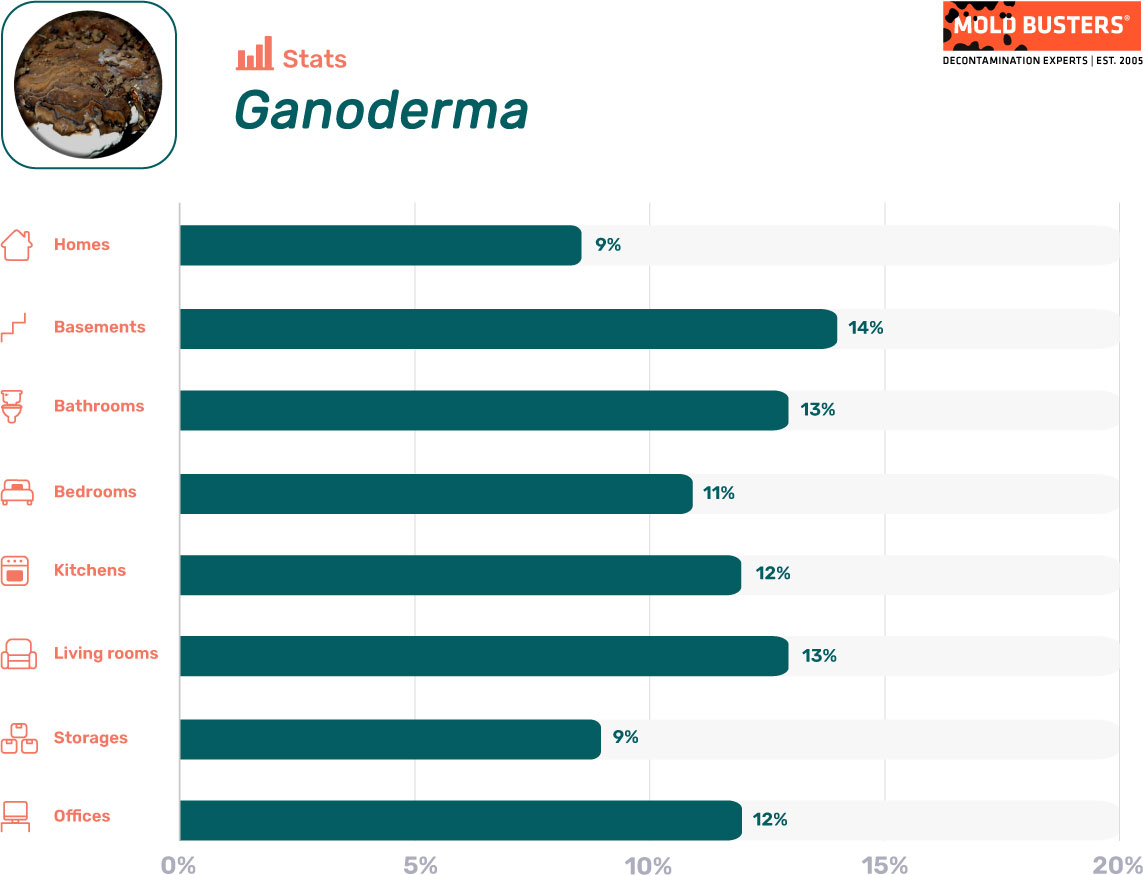

What are the benefits of Ganoderma?
Ganoderma has been used in traditional medicine for more than 2000 years. The many beliefs regarding the health effects of Ganoderma are rooted in tradition, culture, and anecdotal evidence, with recent scientific reports backing the health benefits of Ganoderma.
Hundreds of metabolites have been isolated from Ganoderma species, mostly polysaccharides, steroids, and triterpenes but also alkaloids, glycoproteins, phenols, and vitamins. In combination, many of them are reported to have some of the following properties [2]:
- anti-cancer
- anti-inflammatory
- anti-tumor
- anti-oxidant
- immunomodulatory
- immunodeficiency
- anti-diabetic
- anti-viral
- anti-bacterial
- anticonvulsant
- anti-fungal
- anti-hypertensive
- anti-atherosclerotic
- anti-aging
- anti-androgenic
- anti-hepatotoxic
- free-radical scavenging
- neuroprotective
- sleep-promoting
- cholesterol synthesis inhibiting
- hypoglycemic
- inhibition of lipid peroxidation/oxidative DNA damage
- hepatoprotective
- maintenance of gut health
- prevention of obesity
- stimulation of probiotics
Traditionally, Ganoderma extracts were prepared only using the fruiting bodies, which take several months to develop. However, due to demand for year-round production, medicinal extracts are now also prepared from spores, mycelia, and culture broths. Today, the estimated annual market value of Ganoderma products in Asia is over US$ 2.5 billion [2].
Health risks and dangers of Ganoderma
Contrary to its positive effects on humans, Ganoderma can be very deadly to plants. These fungi cause ştem and root rot which can completely kill and fell trees when not managed promptly. They spread through airborne spores and through infected roots. Ganoderma-related diseases have caused massive economic losses, particularly in the oil palm industry (which is worth over 20 billion $ US annually in Malaysia and Indonesia) [4].
Before taking Ganoderma, consult your doctor especially if you are already undergoing medication. high concentrations of Ganoderma spp. extracts may cause nausea in some individuals and may cause complications in some cases combined with blood thinners/clotters. Pregnant and nursing women should avoid using Ganoderma as its effects on such conditions are not clear. It can lead to bleeding, which is also very dangerous for individuals with thrombocytopenia or those undergoing surgery [5, 9].
Consult your doctor before taking Ganoderma if:
- You are expecting or nursing a baby
- You suffer from an autoimmune disease
- You have recently undergone or are due to undergo surgery
- You are using aspirin or some other medication for blood thinning
- You are undergoing chemotherapy
You are under immunosuppressive medication.
Ganoderma and palm trees
Certain Ganoderma species can be very pathogenic to palm trees. Specifically, G. zonatum causes “Ganoderma butt rot of palms”. It degrades the wood in the lower part of palms, eventually causing it to die of. G. zonatum has been reported in at least 65 species of palm trees (Fig. 3). Ganoderma butt rot is a major problem in Florida and there are currently no ways to prevent the disease or to cure infected trees [7].
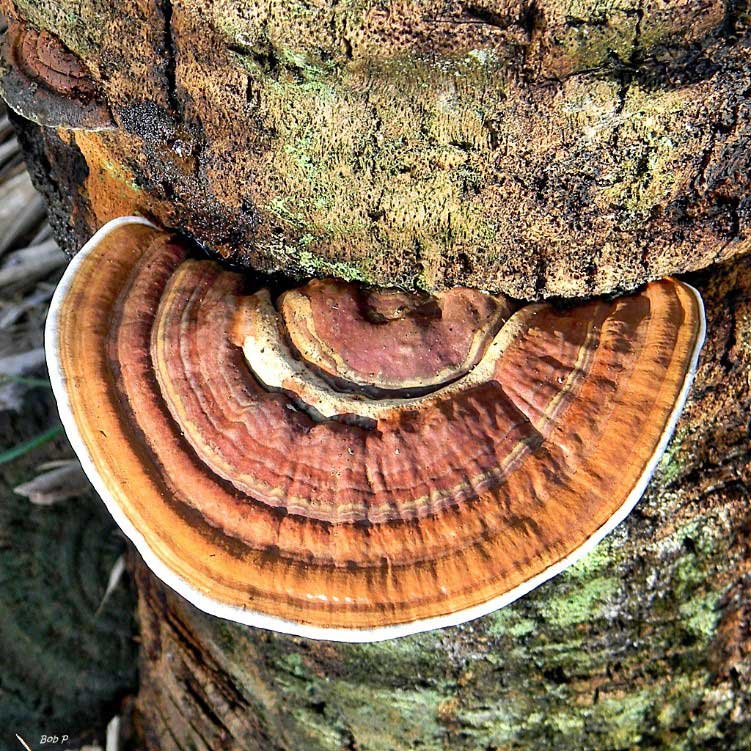
How do you get rid of Ganoderma?
Getting rid of Ganoderma is not an easy task, especially since there are still no fungicides available that are effective against them. Farmers of palm trees and other trees of economic value are left with only one option: mechanical control.
It is recommended that any tree affected by Ganoderma rot should be uprooted completely. It should then be incinerated or disposed of at a permitted landfill to avoid spreading to uninfected trees. The soil where the tree was should also be removed since planting another tree there will lead to another infection.
Proper management of wood lots is recommended. Cut down old trees before they rot and become hosts to Ganoderma. It is also wise to separate palm trees from hardwood trees that can spread Ganoderma.
References
- Benzie IFF, Wachtel-Galor S (2011). Ganoderma lucidum (Lingzhi or Reishi): A Medicinal Mushroom. In: Herbal Medicine: Biomolecular and Clinical Aspects. 2nd edition. CRC Press/Taylor & Francis, Boca Raton FL.
- Hapuarachchi KK, Elkhateeb WA, Karunarathna SC, Cheng CR, Bandara AR, Kakumyan P, Hyde KD, Daba GM, Wen TC (2018). Current status of global Ganoderma cultivation, products, industry and market. Mycosphere 9(5), 1025–1052.
- Loyd AL, Linder ER, Anger NA, Richter BS, Blanchette RA, Smith JA (2018). Pathogenicity of Ganoderma Species on Landscape Trees in the Southeastern United States. Plant Dis. 102(10):1944-1949.
- Ho CL, Tan YC (2015). Molecular defense response of oil palm to Ganoderma infection. Phytochemistry. 114:168-77.
- WebMD (2019). Reishi Mushroom. Retrieved from webmd.com.
- Sum SS, Ziegler J (2016). Lingzhi and Cordyceps: Two Commonly Used Chinese Medicinal Herbs, Safe or Not? Nutr Clin Pract. 31(5):695-7.
- Elliott ML, Broschat TK (2018). Ganoderma Butt Rot of Palms. Retrieved from edis.ifas.ufl.edu.
- Humar, M. (2011). Sploščena pološčenka je uporabna tudi v umetnosti. Les: revija za lesno gospodarstvo, 63(10), 398-398.
- Jin, X., Beguerie, J. R., Sze, D. M. Y., & Chan, G. C. (2012). Ganoderma lucidum (Reishi mushroom) for cancer treatment. Cochrane Database of Systematic Reviews, (6).

Get Special Gift: Industry-Standard Mold Removal Guidelines
Download the industry-standard guidelines that Mold Busters use in their own mold removal services, including news, tips and special offers:

Written by:
John Ward
Account Executive
Mold Busters
Edited by:
Dusan Sadikovic
Mycologist – MSc, PhD
Mold Busters
